Education & Resources
Empowering You With Knowledge
At Roseville Skin Cancer Clinic, we believe education is the first step in prevention. By understanding the risks, recognising warning signs, and learning how to protect your skin, you can take an active role in safeguarding your health.
Your skin is your body's largest organ and a vital part of your immune system. Protecting it and knowing the warning signs, gives you the best chance of staying healthy, confident, and cancer-free.
Learn how to recognise the most common forms of skin cancer and when to seek help.
Melanoma
Melanoma often appears as a mole or pigmented spot, but it has features that distinguish it from normal moles. The ABCDE rule is a simple guide:
- A – Asymmetry: One half looks different from the other.
- B – Border: Edges may be jagged or irregular.
- C – Colour: More than one colour (brown, black, red).
- D – Diameter: Larger than 6mm (pencil eraser).
- E – Evolution: Changing in size, shape, or colour.
Tip: The “Ugly Duckling” sign is another warning — a mole that looks different from your other moles may need checking.
Most moles are harmless, but if you notice any of these warning signs, book a skin check promptly.
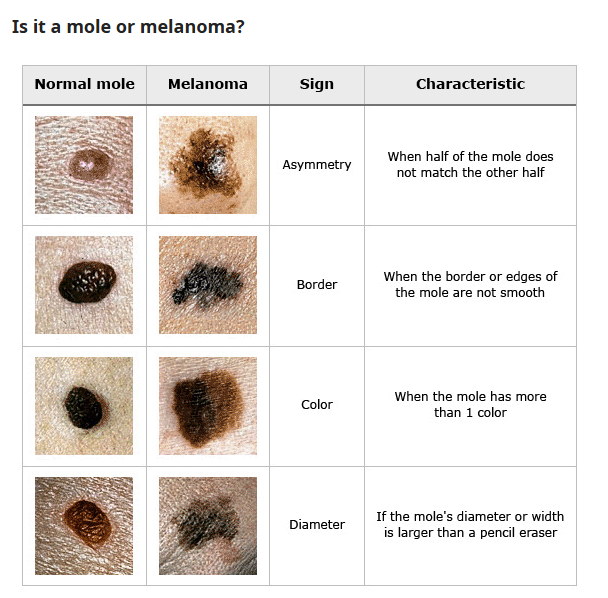
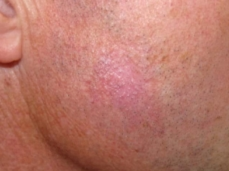
Basal Cell Carcinoma (BCC)
The most common skin cancer in Australia, usually on sun-exposed areas like the face, head, neck, and back.
Symptoms:
- A shiny, pearly lump
- A scaly, dry area that is shiny and pale or bright pink
- lump that may bleed easily
Squamous Cell Carcinoma (SCC)
SCC arises in the outer layer of the skin, usually in sun-damaged areas. It tends to grow faster than other non-melanoma cancers.
Symptoms:
- Thickened, red, scaly spot
- Rapidly growing lump
- A sore that does not heal
- May be tender to touch
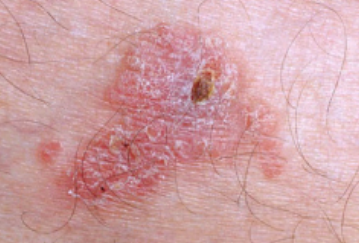
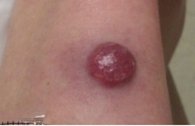
Merkel Cell Carcinoma
A rare but aggressive cancer that spreads quickly.
Symptoms:
- A rapidly enlarging, irregular red nodule
Cutaneous Lymphoma (Rare)
A type of non-Hodgkin lymphoma that affects the skin. Treatment is usually team-based.
Symptoms:
- Patches of red, scaly, or dry skin
- Itchy skin
- Flat or raised bumps that may enlarge
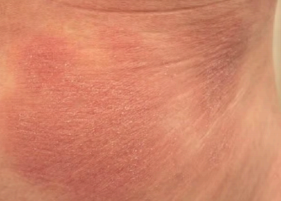
Know how to check your own skin and the warning signs to never ignore.
How to Examine Your Skin from Head to Toe
- Use a full-length mirror and a hand mirror in a well-lit room.
- Check your face, neck, ears, and scalp (use a comb or hairdryer to part hair).
- Examine your hands, fingernails, arms, underarms, and elbows.
- Look closely at your torso, chest, breasts (including under), and abdomen.
- Check your back, buttocks, and the backs of your legs using mirrors.
- Don’t forget your genital area, self-examine and raise any concerns at your appointment.
- Inspect your legs, ankles, feet, toenails, and between your toes.
If you notice a mole or spot that is new, changing, or doesn’t heal, book a skin check.
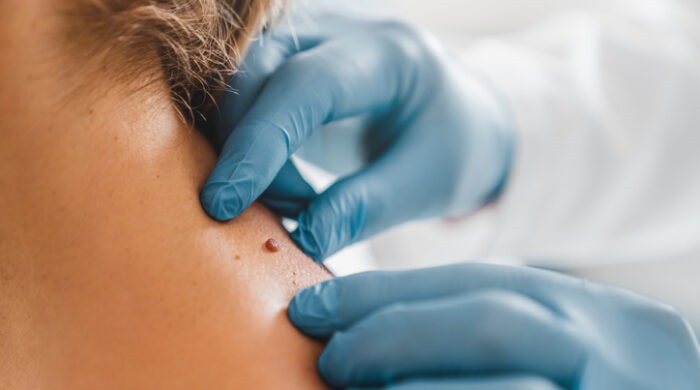
Risk Factors
You may be at higher risk if you have:
- Fair skin, freckles, light hair or eyes
- A family or personal history of melanoma
- Numerous moles, especially atypical moles
- History of blistering sunburns or tanning bed use
- Weakened immune system (e.g. from medications or illness)
- Outdoor work or lifestyle with high sun exposure
Warning Signs to Watch For
- A mole or spot that changes in size, shape, or colour
- A lesion that bleeds, crusts, or itches
- A sore that doesn’t heal within a few weeks
- Any new lump or spot that looks different from the rest
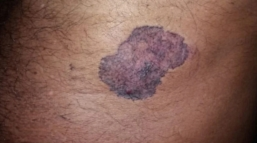
Skin Cancer in Different Skin Types
People with darker skin tones are also at risk, although cancers may look different. They can appear in less-exposed areas, such as:
- Under nails (subungual melanoma)
- Palms and soles
- Between toes or in mucosal areas
Because these spots may be harder to see, regular checks are important for all skin types.
Simple habits that reduce your risk every day
- Protect your skin daily with SPF50+ sunscreen.
- Wear protective clothing, hats, and sunglasses.
- Seek shade between 10am and 4pm.
- Avoid solariums/tanning beds.
- Keep a healthy lifestyle ,good nutrition, less alcohol, and no smoking all support skin health and immunity.
Prevention
The most effective prevention is daily sun protection. Follow the Cancer Council’s Five S’s:
- Slip on protective clothing
- Slop on SPF50+ broad-spectrum sunscreen
- Slap on a wide-brimmed hat
- Seek shade
- Slide on sunglasses
Could This Sore Be Cancer?
Not every sore that lingers is harmless. Basal cell carcinomas (BCCs) and squamous cell carcinomas (SCCs) often appear as non-healing spots. Warning signs include:
- A sore or pimple that does not heal within a few weeks.
- A spot that bleeds easily or forms a scab that keeps coming back.
- A patch of skin that is red, scaly, or thickened.
If you have a sore that hasn’t healed after 4–6 weeks, it’s important to get it checked. Early treatment is usually simple and highly effective.
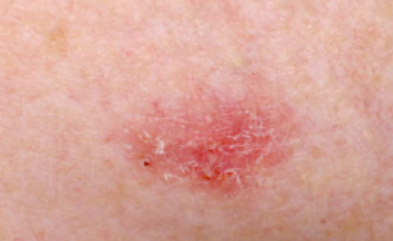
SunSmart for Kids
Children’s skin is especially sensitive to sun damage, and much of our lifetime risk of skin cancer is shaped by sun exposure in early years. Good habits formed in childhood can last a lifetime. Encourage your child to:
- Slip on protective clothing.
- Slop on SPF50+ sunscreen before school and outdoor play.
- Slap on a wide-brimmed hat.
- Seek shade during peak UV times.
- Slide on sunglasses.
Schools often have SunSmart policies, but reinforcing these habits at home is just as important.
Sunscreen Tips
- Use SPF50+ broad-spectrum, water-resistant sunscreen.
- Apply 20 minutes before going outdoors.
- Reapply every 2 hours, and after swimming or sweating.
- Don’t forget ears, scalp, lips, and the tops of feet.
These guides are designed to empower you with knowledge, but they do not replace a professional skin check. If you’re concerned about any spot or change, book an appointment with a specialist for peace of mind.
Both natural sunlight and artificial tanning devices (such as solariums and tanning beds) expose the skin to ultraviolet (UV) radiation, which directly damages the DNA in skin cells. Over time, this increases the risk of premature ageing (wrinkles, pigmentation changes) and skin cancers, including melanoma.
Why Tanning is Harmful
- Sun tanning is the skin’s injury response to UV radiation. The “tan” is actually your skin producing more pigment to shield itself from further DNA damage.
- Tanning beds emit concentrated UVA and UVB radiation, often more intense than midday sun. Even short-term use can significantly increase melanoma risk.
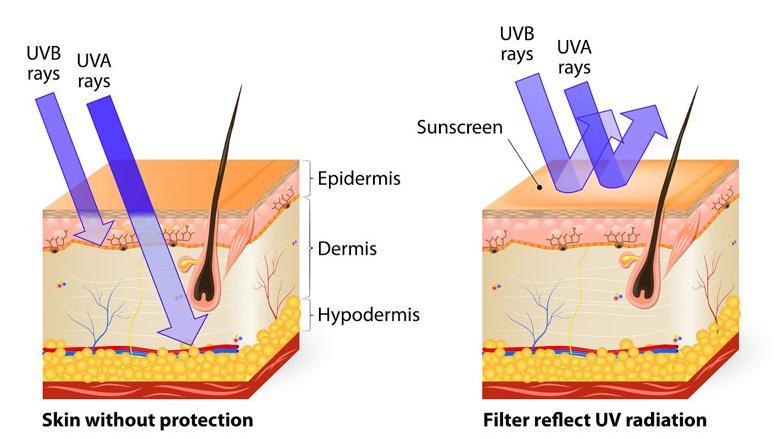
UV Beyond Sunshine
- Cloud cover reduces visible sunlight but not all UV rays , up to 80% of UV can penetrate clouds.
- Reflections from water, sand, snow, or concrete bounce UV onto your skin from multiple angles.
- Altitude increases UV exposure , for every 1,000 metres above sea level, UV intensity rises by about 10–12%.
Seasonal & Travel Considerations
- UV is strongest in spring and summer, especially between 10am and 4pm.
- Closer to the equator, UV radiation is stronger year-round.
- When travelling to sunny or high-altitude locations, bring broad-spectrum sunscreen, sun-protective clothing, and sunglasses.
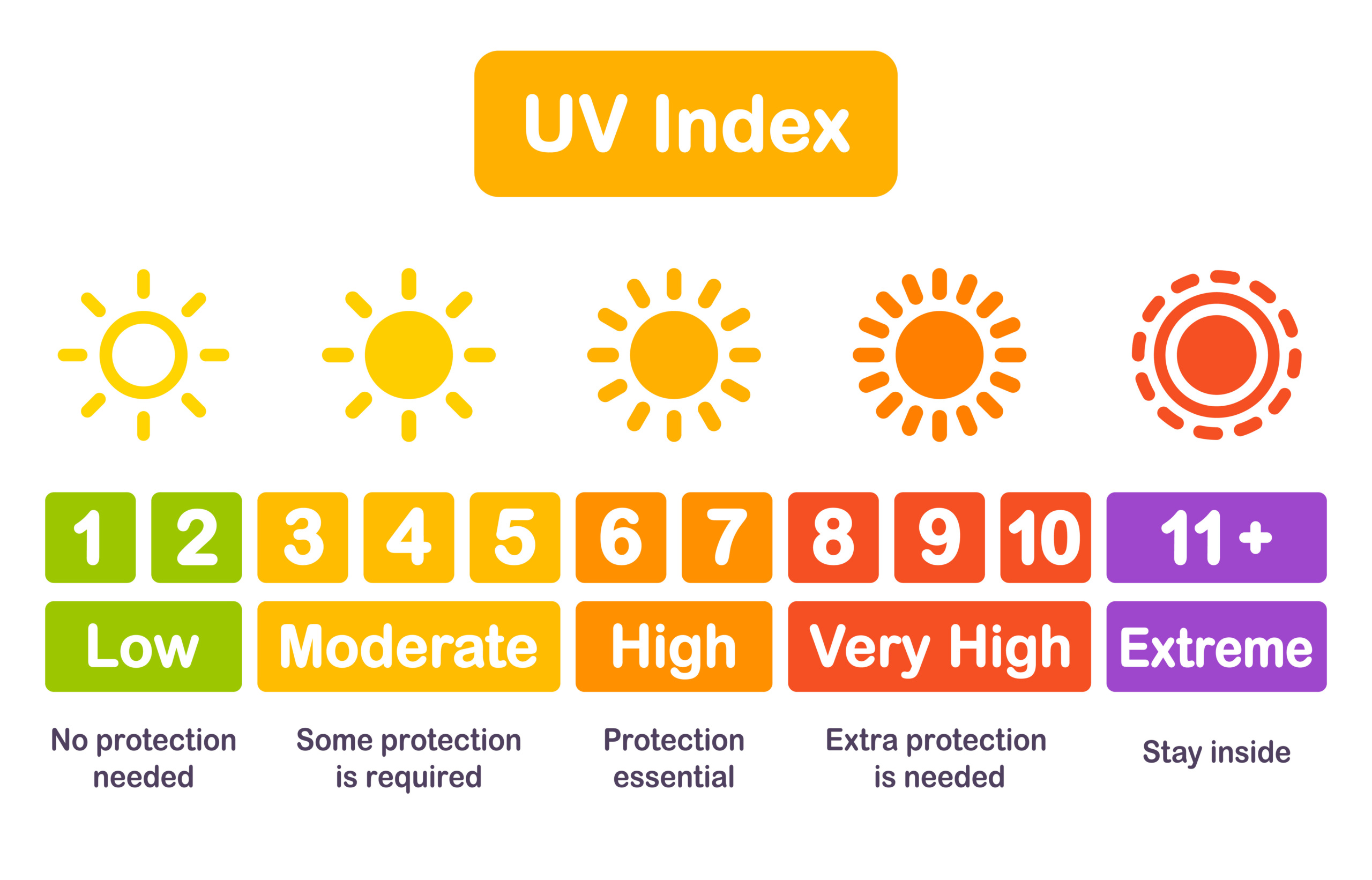
UV Index Explained
The UV Index measures the strength of UV radiation at a given time and place:
- 0–2: Low risk
- 3–5: Moderate risk (protection recommended)
- 6–7: High risk (protection essential)
- 8–10: Very high risk
- 11+: Extreme risk (avoid direct sun exposure)
Check the UV Index daily (via the Bureau of Meteorology or smartphone apps) and plan outdoor activities for lower-UV times (morning or late afternoon).
Sunscreen is one of the most effective tools for reducing skin cancer risk, but choosing the right type , and using it correctly , makes all the difference.
SPF Explained
- SPF (Sun Protection Factor) measures protection against UVB rays, which cause burning.
- SPF 30 filters ~97% of UVB; SPF 50+ filters ~98%.
- The difference may seem small, but over time, SPF 50+ provides significantly better protection.
UVA vs UVB
- UVB causes sunburn and direct DNA damage.
- UVA penetrates deeper, contributing to ageing and skin cancer.
- Always choose a broad-spectrum sunscreen that protects against both UVA and UVB.
Water Resistance
- Look for water-resistant sunscreens if swimming or sweating.
- Reapply every 2 hours, and immediately after swimming or towel drying.
Sensitive Skin & Allergies
Melanoma often appears as a mole or pigmented spot, but it has features that distinguish it from normal moles. The ABCDE rule is a simple guide:
- If you react to standard sunscreens, try:
- Mineral sunscreens (zinc oxide or titanium dioxide), which are less irritating.
- Fragrance-free or hypoallergenic formulas.
- Test on a small patch before applying broadly.
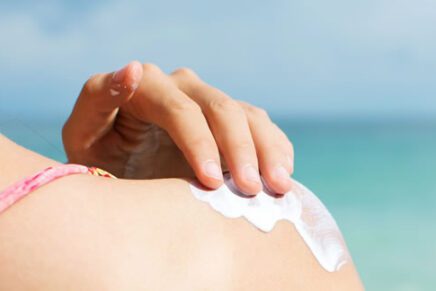
While sun protection and regular skin checks remain the gold standard, research suggests certain supplements may support skin health and reduce cancer risk in some patients.
Vitamin B3 (Nicotinamide)
- Evidence from Australian clinical trials shows that nicotinamide (Vitamin B3) can reduce the rate of new non-melanoma skin cancers in high-risk individuals.
- It is safe, inexpensive, and widely available, but should be taken under medical supervision.
Vitamin D3
- Sun exposure helps the body make Vitamin D, but supplementation may be needed for people who practise strict sun protection.
- Adequate Vitamin D supports bone health and immune function, but excessive sun exposure is not recommended as a source.
Antioxidants (Vitamin C, Vitamin E, Selenium)
- Laboratory studies suggest antioxidants protect against oxidative damage, but large-scale human trials have shown mixed results.
- Supplements should not replace sun protection or medical care.
Collagen & Other Skin Health Products
- Collagen powders and supplements may improve skin hydration and elasticity, but there is no evidence they prevent skin cancer.
- These may be considered for cosmetic benefits, not cancer prevention.
If you notice a mole or spot that is new, changing, or doesn’t heal, book a skin check.
Why It Matters
Your skin is both your first line of defence and a window to your health. By learning to care for it, recognise warning signs, and partner with specialists, you protect not just your skin but your overall wellbeing.
Book your skin check today and take the most important step towards lifelong skin health.
